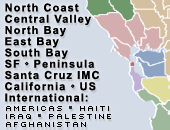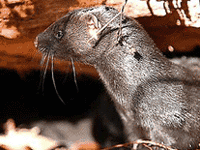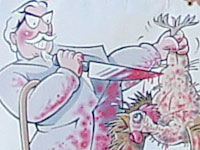Feature Archives
At 6am, Sunday April 10th, members of the Joint Terrorism Task Force, FBI, ATF, Secret Service, Coast Guard, and local police raided activist homes with guns drawn. Since the arrest of Peter Young in Santa Clara County, there have been increasing levels of activity by the Feds in the counties of San Francisco, Alameda, Santa Clara, and Santa Cruz. The scope of the warrants issued suggests that their primary emphasis is on targeting people who are doing support work for Peter. All materials related to his support campaign found at the homes were seized, and people who have visited Peter in jail, or attended court dates have been followed.
Meanwhile, the FBI is still looking for Daniel Andreas San Diego, their prime suspect in the 2003 bombings of two East Bay companies targeted by Stop Huntingdon Animal Cruelty (SHAC). Last week, an updated bulletin seeking his arrest was posted and distributed widely across the mainstream media regarding new information the FBI has apparently gathered regarding distinctive tattoos. The source of the information is unknown at this time.
SupportPeter.com ·
Related Reports: 1 | 2
Reports on San Diego and East Bay Bombings: 1 | 2 | 3
Reports on SHAC Arrests Last Year and More: 1 | 2 | 3 | 4 | 5 | 6
Summary of Peta/KFC Meeting
PETA's Ongoing Kentucky Fried Cruelty Campaign
Check Indybay's Animal Liberation Calendar for Local Events
Reports & Photos: 1 | 2 · Previous UCSF Protest Coverage
Details of dog experiments and others at UCSF
In Defense of Animals' Vivisection Information website
Recent History of Tinkerbelle: 1 | 2 | 3
Contention Over Tinkerbelle's Care at PAWS: 1 | 2 | 3 | 4
Captive Elephants Elsewhere: Anchorage 1 | 2, Connecticut, Chicago (#3), Detroit, & Central Valley, CA
IDA's Campaign to Help Stamp Out Captive Elephant Foot Disease
More Info on Easter and Animals: In Defense of Animals | Viva!USA








